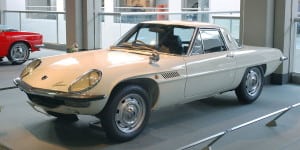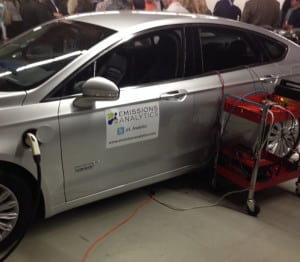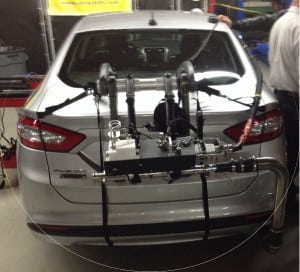
As automotive journalists, we get to see, touch, and hear some of the greatest things on wheels. Find out what the Motor Press Guild’s (MPG) first event of the year had to offer last night.
The things we see, and the people we talk to as auto journalists is enough to make anyone envious. But beware, writing for a living isn’t for the faint of heart. With this word of caution, let me introduce you to what happens when you join an automotive journalist group. MPG kicked off first event of year by introducing the new board members, as well as Need for Speed preview and more.
You truly meet interesting people!
As we sat down to eat, the gentleman in front of us was wearing a Ford Motorsports jacket. It was none other than Brian Winer sitting next to the legendary Wallace “Willy” Wyss, authors of the excellent book “GT40 Photo Archive“. For those of you who read Velocetoday, you will recognize Willy’s name as a regular contributor to this great website about collectible Italian and French cars.
Petrolicious is so cool!
So what is the Green Performance Vehicle journalist writing about Petrolicious? Simply enough because Petrolicious is very cool, even if it doesn’t talk about green cars. We met up with Yoav Gilad, the new Copy Editor of the website that has been around a little longer than our CarNewsCafe. It has already produced some mouth-watering videos of classic and modern performance cars.
Real life MPG testing.

There are three ways to gauge how much gasoline a car really consumes. You can either listen to what the manufacturer claims, but that can be a hit or miss. You can read about what journalists managed, but let’s face it, we sometimes have very heavy right feet. The best way is to have a computer system monitor the true amount of gasoline burned. Emission Analytics lets journalists test a car’s real life miles per gallon (MPG). As for the results, you’ll just have to wait for the next Motor Trend. Hint, Ford is very close.

Last but not least, there was one of Mazda’s most beautiful car ever made, the Cosmo. The Cosmo was produced in 1967 and was powered by a Wankel two-rotor engine with 982 cc of displacement. It produced about 110 HP. Sure, the bumper height wouldn’t pass the DOT safety these days, but look at the overall design.
Ever wanted to hear what one sounds like?
We hope you enjoyed this event as much as we did. Here are more videos.
and







